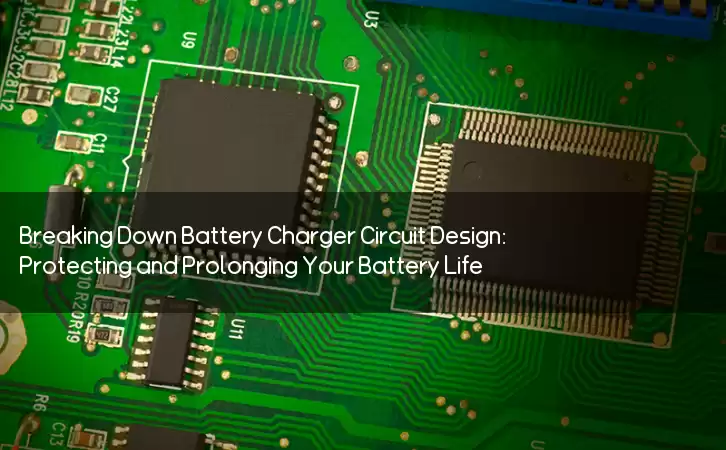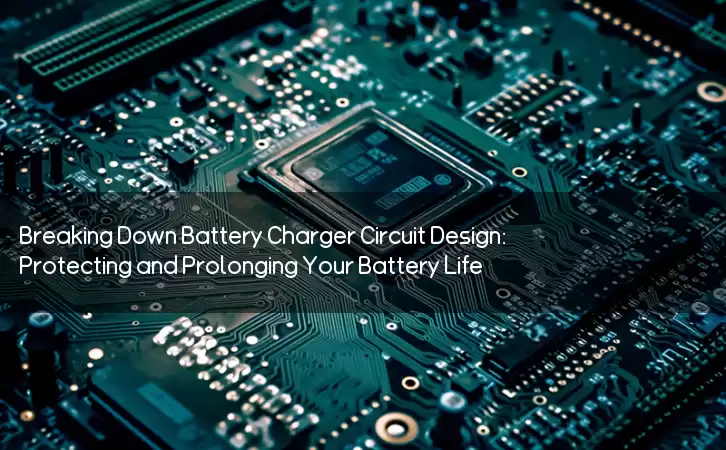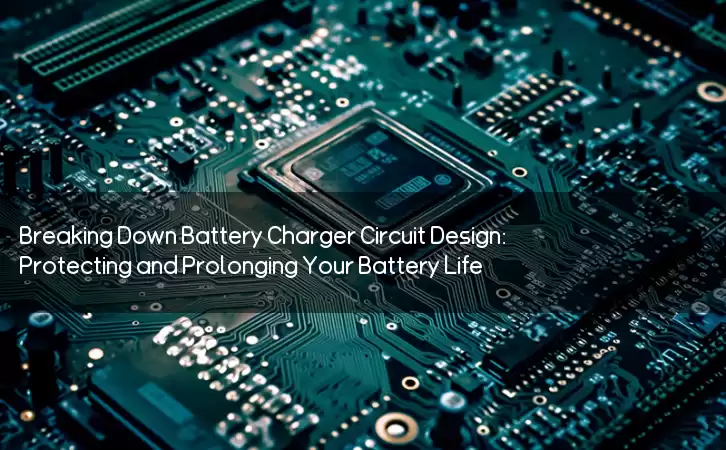Information Center
Breaking Down Battery Charger Circuit Design: Protecting and Prolonging Your Battery Life
Published:2023-06-21 10:35:33 Author:Green WCND Views:70Battery Charger Circuit: An Overview

Battery charger circuits are commonly applied to recharge rechargeable batteries in several applications from handheld electronic devices, automobiles, and deep-cycle batteries such as those used for solar power systems. Battery chargers are classified as fast-charge, trickle-charge, or constant-current charge circuits. A battery charging circuit mainly incorporates a power source, a power supply unit, and a charging control module to regulate power and voltage supply to the battery while charging. The control module ensures that batteries receive the required voltage and current level based on the type of battery being charged.

Battery Charger Circuit Design

Battery charger circuit design can be customizable to suit specific charging needs. However, the basic layout of a battery charger circuit incorporates several components, including resistors, diodes, transistors, and capacitors. The design of a battery charger circuit is determined by the charging voltage and current characteristics of specific battery chemistries. The battery’s voltage charge levels are monitored through the use of a voltage divider network that offers feedback to adjust the charging voltage. Resistors serve the purposes of limiting current and dropping the voltage down to a level that is suitable for the charging circuit.
Charge Circuit Protection
The charging circuit should include precautions that ensure that the battery is not overcharged or undercharged, as this can damage the battery and poses a risk of explosion. Protection mechanisms such as over-current protection, over-voltage protection, and under-voltage protection are essential to maintain the battery’s health. Over-current protection is provided through the use of a current regulator, limiting the charging current to the battery; this ensures that batteries are not supplied with a current that exceeds the maximum rating specified by the battery manufacturer. Over-voltage and under-voltage protection is achieved through the use of a voltage sensor that shuts off the charging current to the battery when the voltage level exceeds or falls below a specified level.
Types of Battery Charger Circuits
There are several types of battery charger circuits based on the type of battery they charge and the charging mode. The simplest form of battery charging circuit is the trickle charger. It supplies a low constant current level to the battery over a prolonged period, typically over several days. This type of charging circuit is commonly applied to lead-acid batteries that are used as backup power systems.
On the other hand, the constant current charger is a more advanced charging circuit that provides a fixed current level that is independent of the battery’s charge level. This type of charging circuit is ideal for rapid charging rechargeable batteries and is commonly applied to Li-ion and NiMH batteries used in portable electronic devices.
Fast chargers are the most advanced type of battery charger circuit, charging the battery by supplying a high charging current and a higher charging voltage. This high current level increases the battery charging speed while minimizing the charging time. However, fast charging generates excess heat, which can damage the battery or even cause a fire. Therefore, fast charging circuits incorporate temperature sensors that help regulate the charging process by adjusting the charging rate to prevent overheating.
Conclusion
Battery charger circuits are essential in maintaining the health of rechargeable batteries. Designers of charging circuits must take into account the battery charging voltage and current levels, the type of battery, and the charging mode. By incorporating protection mechanisms such as over-voltage, over-current, and under-voltage protection, battery charger circuits can prevent battery damage and extend its lifespan. The choice of battery charger circuit depends largely on specific rechargeable battery characteristics and its intended application.
Power Adapter Design and Customization Guide for Portable Electric KettlesI. Common Design Types for Portable Electric Kettle Power AdaptersPortable electric ke···
I. Common Design Types of Power Adapters External Independent Type (Most Common) Design: A standalone adapter (e.g., "black brick") connected to the p···
Handheld Vacuum Cleaner Power Adapter Selection GuideIntroductionHandheld vacuum cleaners have become a mainstream tool for household cleaning due to their port···
Drill Power Adapter Selection Guide.drill-container { font-family: Arial, sans-serif; line-height: 1.6; max-width: 800px; margin: 0 auto; padding: 20px; } .dril···





